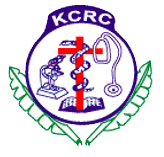Introduction
What began with a handful of mysterious illnesses in a central China city has traveled the world. First detected on the last day of 2019, the novel coronavirus has killed more than 330,000 people with infections surpassing five million worldwide. It has triggered nationwide lockdowns, stock market upheaval and dangerous conspiracy theories.
Most cases are mild, but health officials say much is still unknown about the virus that causes the disease covid-19.
The Washington Post has spoken to scores of doctors, officials and experts to answer as many of your questions as we can about the newest global health emergency. Here’s what we know so far.
What is it?
These days, “coronavirus” is often prefaced with the word “novel,” because that’s precisely what it is: a new strain in a family of viruses we’ve all seen before — and, in some form, had. According to the WHO, coronaviruses are a large family of viruses that range from the common cold to much more serious diseases. These diseases can infect both humans and animals. The strain that began spreading in Wuhan, the capital of China’s Hubei province, is related to two other coronaviruses that have caused major outbreaks in recent years: severe acute respiratory syndrome (SARS) and Middle East respiratory syndrome (MERS).
Symptoms of a coronavirus infection range in severity from respiratory problems to cases of pneumonia, kidney failure and a buildup of fluid in the lungs. They may appear 2 to 14 days after exposure to the virus.
In April, the CDC added new symptoms of the disease to its list, shedding more light on how the virus infects patients. The symptoms now include: a cough, shortness of breath, fever, chills, repeated shaking with chills, muscle pain, headache, sore throat and a loss of taste or smell.
Covid-19 spreads more easily than SARS and is similar to other coronaviruses that cause cold-like symptoms, experts have said. It appears to be highly transmissible, and since cases are mild, the disease may be more widespread than current testing numbers suggest.
How deadly is it and who is most at risk?
Public health officials say the novel coronavirus is less deadly than SARS, which killed about 10 percent of people who were infected during the outbreak that began in 2002. But epidemiologists are still trying to determine exactly how deadly covid-19 is.
Similar to other respiratory illnesses, older people and those with illnesses such as diabetes and high blood pressure are at increased risk. Data show that the virus is killing more men than women in the U.S.
But, as with other diseases, there can be tremendous individual variation in how people respond. There will be people with known risk factors who recover as well as people who develop severe cases for reasons we don’t understand.
There’s also no evidence that children are more prone to contracting covid-19, according to the CDC, and that was also the case with the disease′s cousins, SARS and MERS.
How does it spread?
The coronavirus primarily spreads from person to person and not easily from a contaminated surface. In updated guidance issued in late-May, the CDC said the virus spreads “easily and sustainably” between people. The agency added that contaminated objects, surfaces and infected animals do not appear to be significant modes of transmission.
